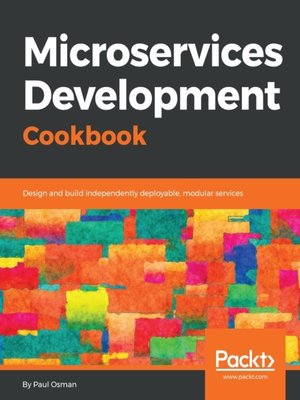Microservices Development Cookbook
ebook ∣ Design and build independently deployable, modular services
By Paul Osman

Sign up to save your library
With an OverDrive account, you can save your favorite libraries for at-a-glance information about availability. Find out more about OverDrive accounts.
Find this title in Libby, the library reading app by OverDrive.



Search for a digital library with this title
Title found at these libraries:
| Library Name | Distance |
|---|---|
| Loading... |
Quickly learn and employ practical methods for developing microservices
Key FeaturesMicroservices have become a popular way to build distributed systems that power modern web and mobile apps. Deploying your application as a suite of independently deployable, modular, and scalable services has many benefits. In this book, you'll learn to employ microservices in order to make your application more fault-tolerant and easier to scale and change.
Using an example-driven approach, Microservice Development Cookbook introduces you to the microservice architectural style. You'll learn how to transition from a traditional monolithic application to a suite of small services that interact to provide smooth functionality to your client applications. You'll also learn about the patterns used to organize services, so you can optimize request handling and processing and see how to handle service-to-service interactions. You'll then move on to understanding how to secure microservices and add monitoring in order to debug problems. This book also covers fault-tolerance and reliability patterns that help you use microservices to isolate failures in your applications.
By the end of the book, you'll be able to work with a team to break a large, monolithic codebase into independently deployable and scalable microservices. You'll also study how to efficiently and effortlessly manage a microservice-based architecture.
What you will learnMicroservice Development Cookbook is for developers who would like to build effective and scalable microservices. Basic knowledge of the microservices architecture is assumed.







